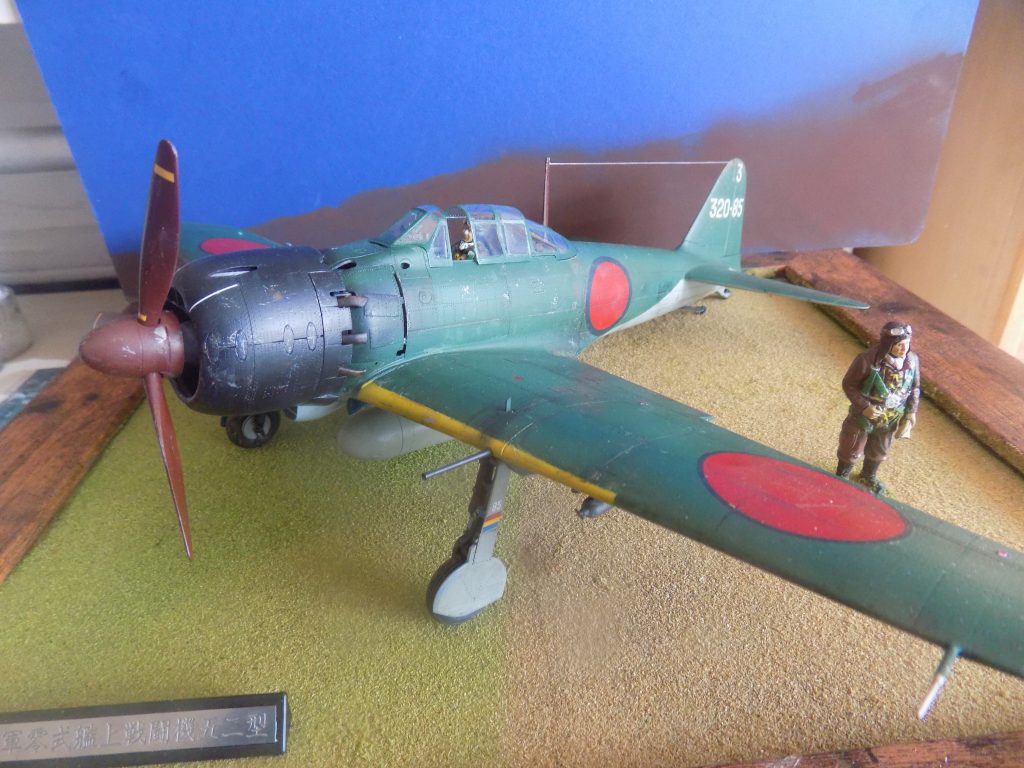
Another outstanding model by Tamiya. The second one I have made of their 1/32 range. I would suggest anyone contemplating making one of their 1/32 scale models should have quite a few kits under their belt first and also a good quality airbrush to do them justice. They are not particularly difficult kits to make you just need to take your time, read the instructions very carefully and make sure you follow the assembly sequence. These kits aren’t meant to be rushed! And you really don’t want to b*lls them up as they are very expensive!
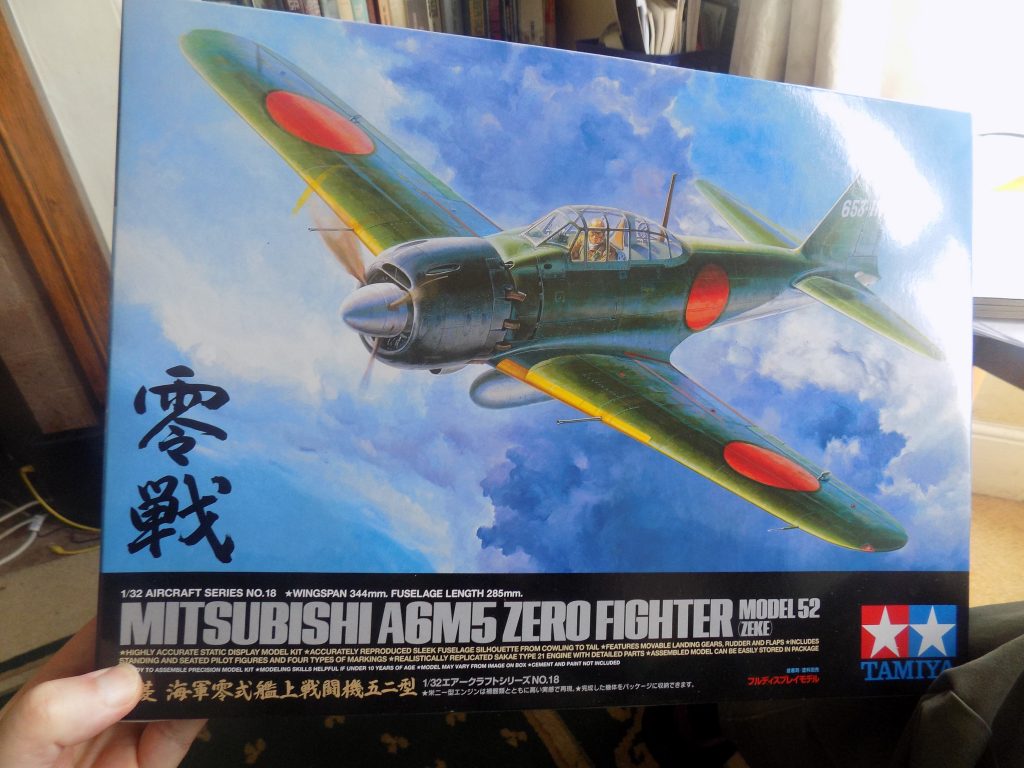
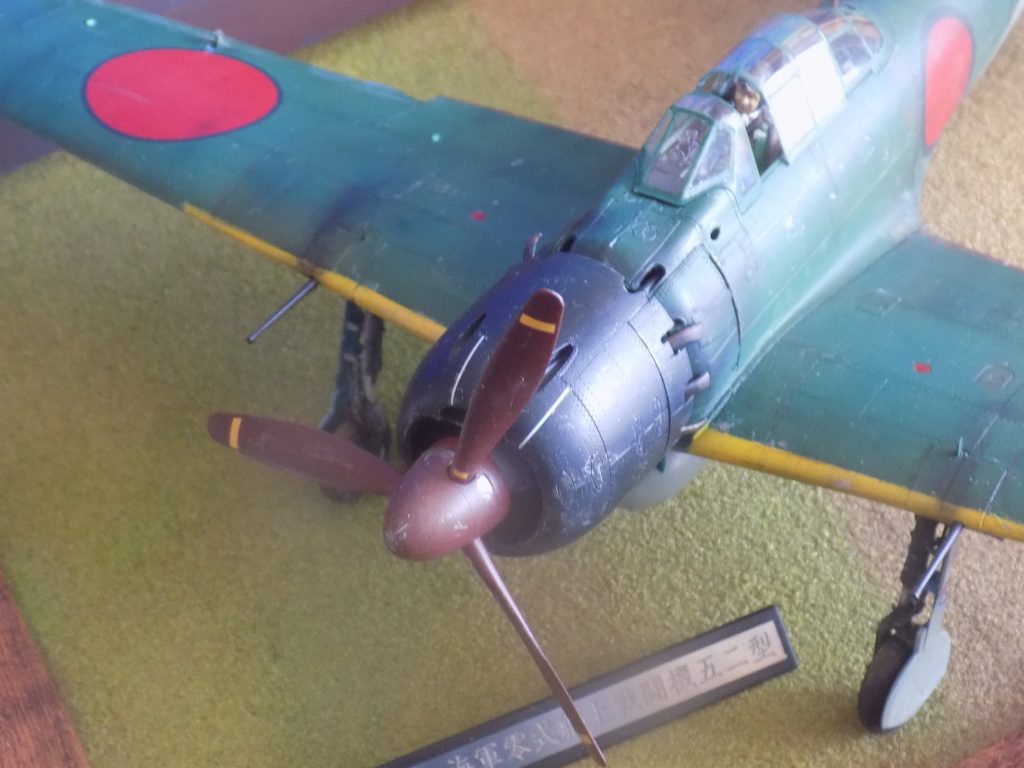
The legendary Zero is surely one of the most beautiful aircraft of all time. It just looks right from every angle and as the old engineering adage goes, if something looks right, it generally is right!
But the Reisen ( Zero fighter) was to the Japanese more than just a superbly designed aircraft. Like the Spitfire it was a symbol of the Japanese nation and their invincibility in the Pacific war at least in the early stages of the conflict.
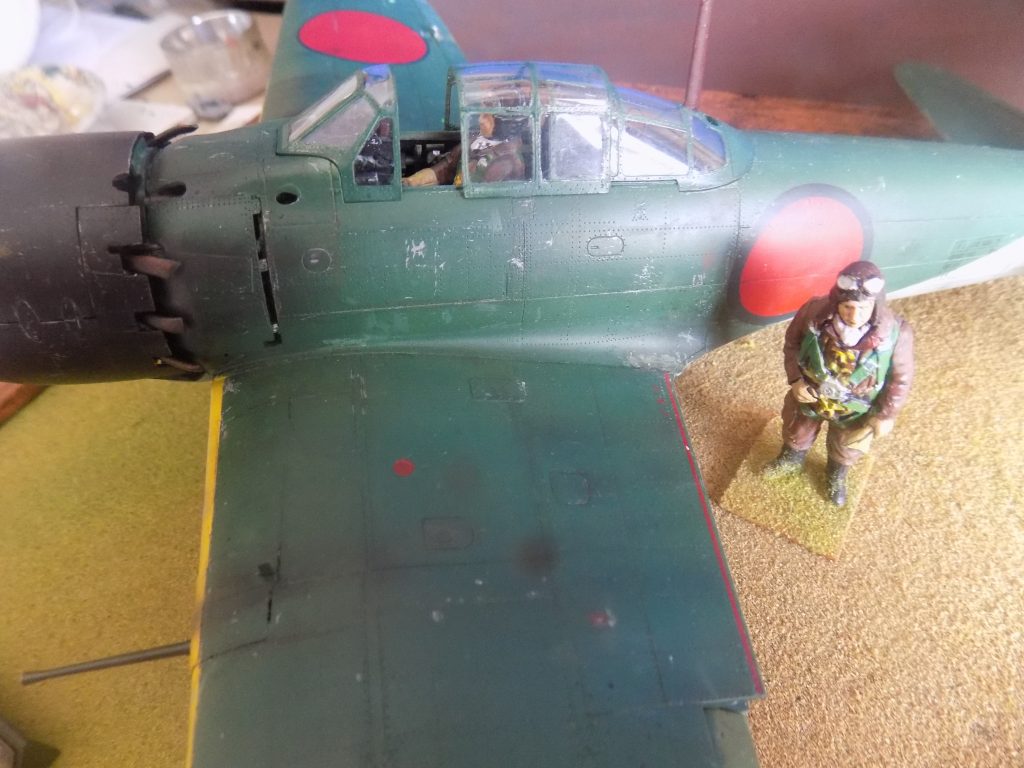
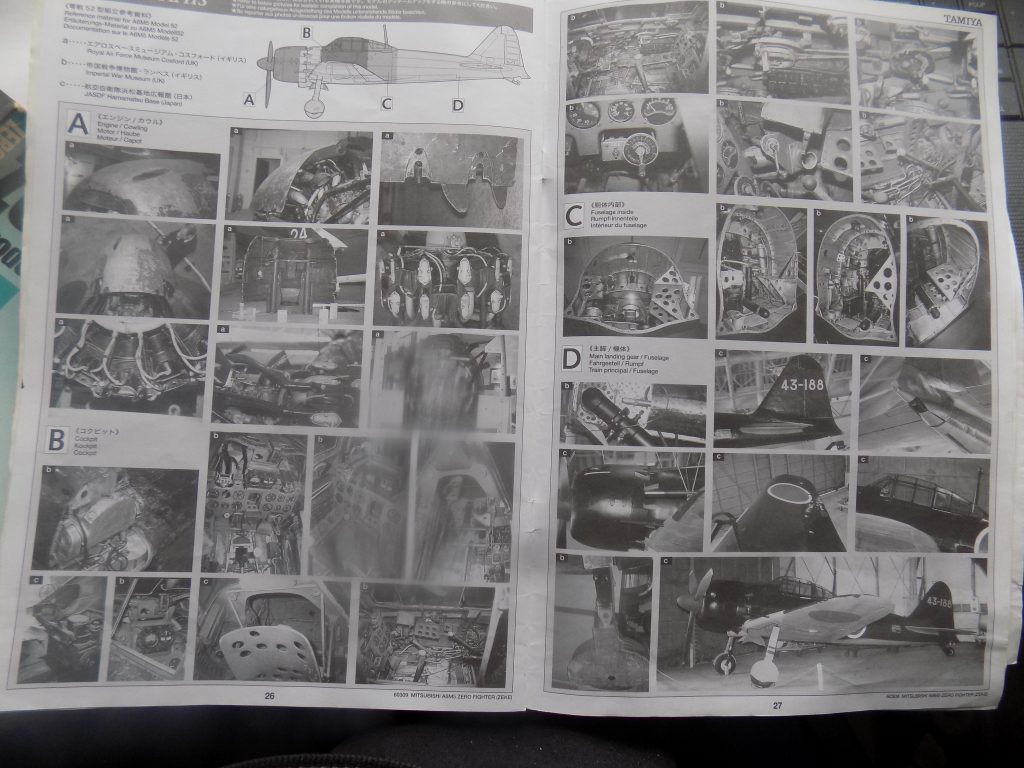
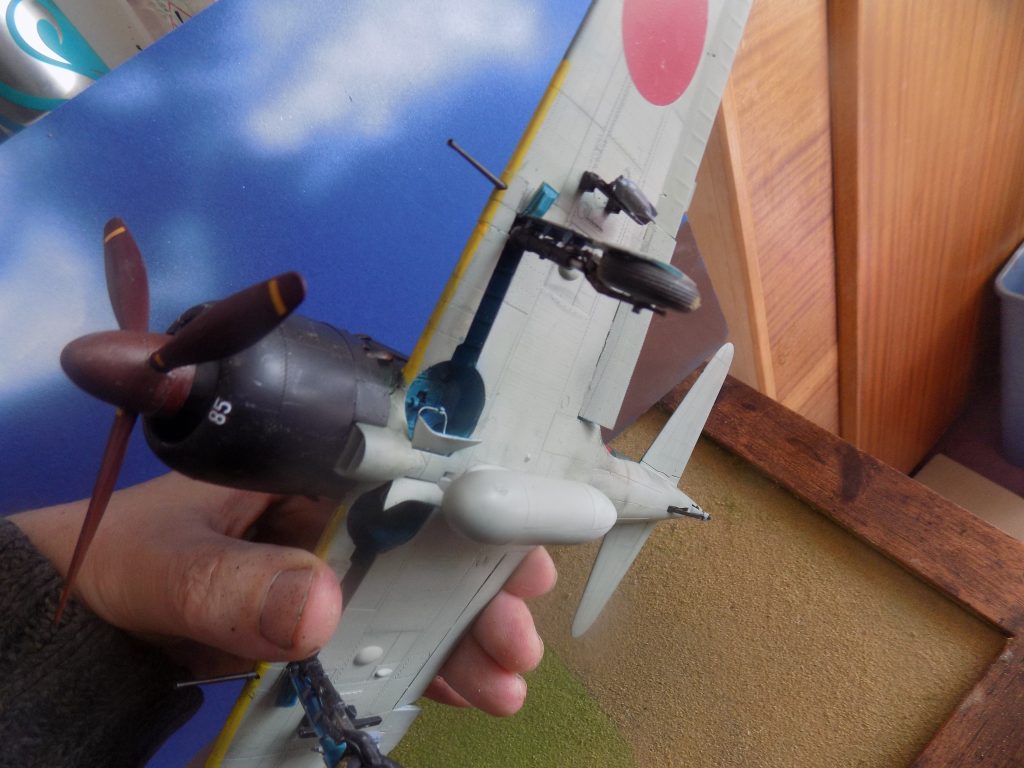
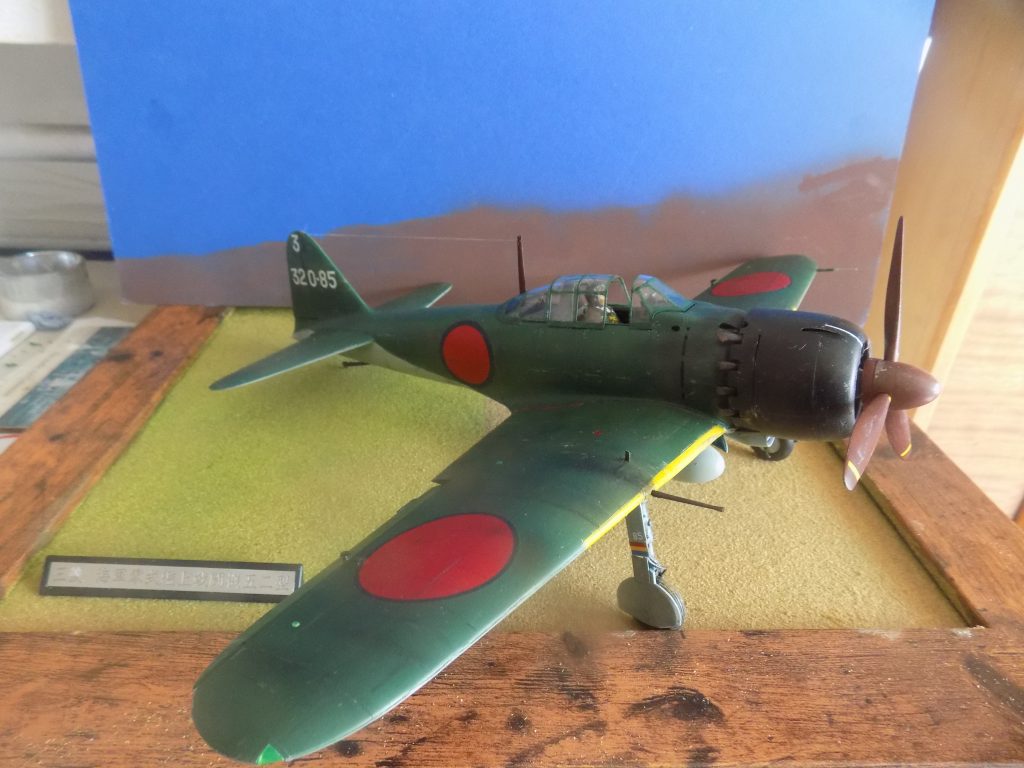
Although the Zero had already been flying in combat in China some eighteen months prior to Pearl Harbour, it came as a complete surprise to the Americans and British who at the time greatly underestimated the Japanese.
It has been said that Japan’s gamble of starting the Pacific war was based on the premise that the Zero could defeat any fighter the Allies put against them and thus gain air superiority as the prelude to victory.
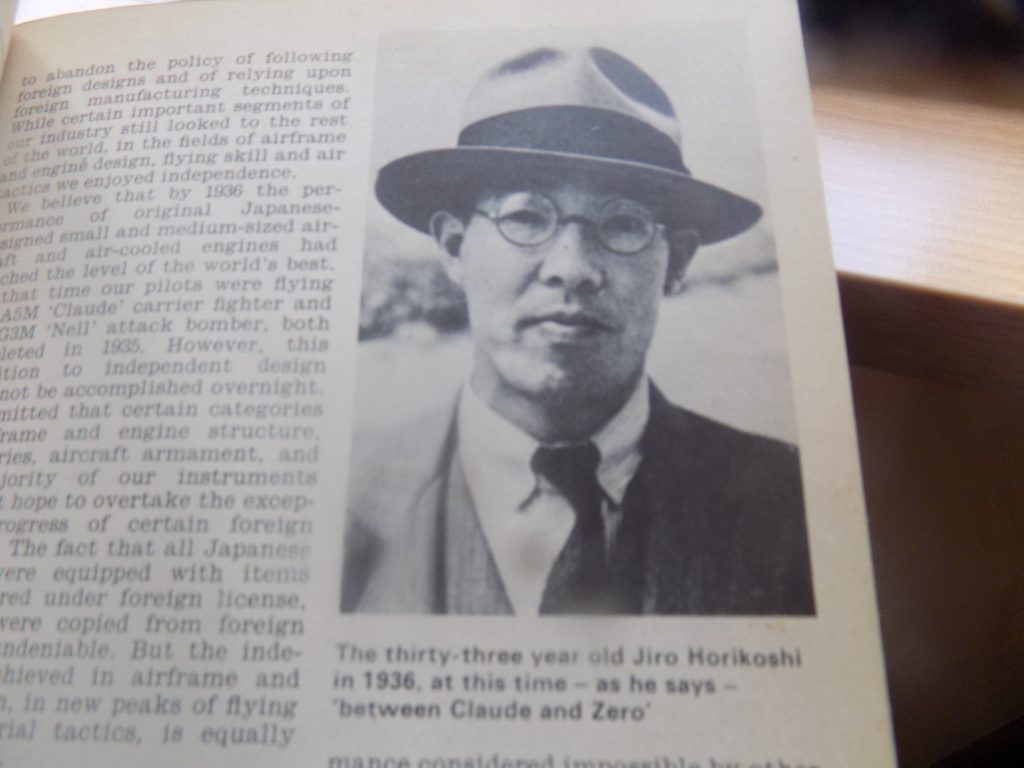
Jiro Horikoshi’s brief for the new carrier-based aircraft was not only to to improve on existing designs but to incorporate all the qualities of a fighter aircraft in one design:
- speed
- range
- climbing power
- weaponry
- manoeuvrability
- endurance
A pretty tall order!
To possess all these qualities would make it simply the best fighter in the world.
In order to achieve this near impossible task it was decided the frame had to be super lightweight and aerodynamic with a powerful 1,000 hp engine.
At Pearl Harbor, Zeros provided air cover and escorted the bombers and strafed airfields.
The Zero dominated the skies in the Philippines, the Indian Ocean and elsewhere.
From early 1940, when the Zero entered service, until late 1942, the Zero enjoyed undisputed mastery of the air.
The Zero was constantly improved and modified during the war and about the same time as the debut of the Model 22, the Americans deployed their latest high speed, heavily armed fighters, the P-38 Lightning and F4U Corsair. But the best known rival of the Zero was the aircraft specially designed to destroy it, the F6F Grumman Hellcat.
The Hellcat came about after a Zero was captured intact after it landed in the Aleutian islands and the Americans were able to learn all its design secrets and improve upon them.
The model 52 was designed to cope with the new American fighters but due to lack of raw materials and production facilities in wartime Japan, modifications concentrated on the aerodynamics.
The folding wing tips were removed and given a more rounded shape.
The Zero Model 52 made its maiden flight in August 1943.
The career of the Zero spanned five years from its debut in China in 1940, fighting over the Solomon Islands and Guadalcanal in autumn 1943, the Mariana Islands, Iwo Jima, Okinawa and finally the Japanese homeland.
Towards the end of the war, the Japanese were severely hampered by lack of fuel and trained pilots and in combat against the technically superior American fighters the Zeros suffered considerable losses.
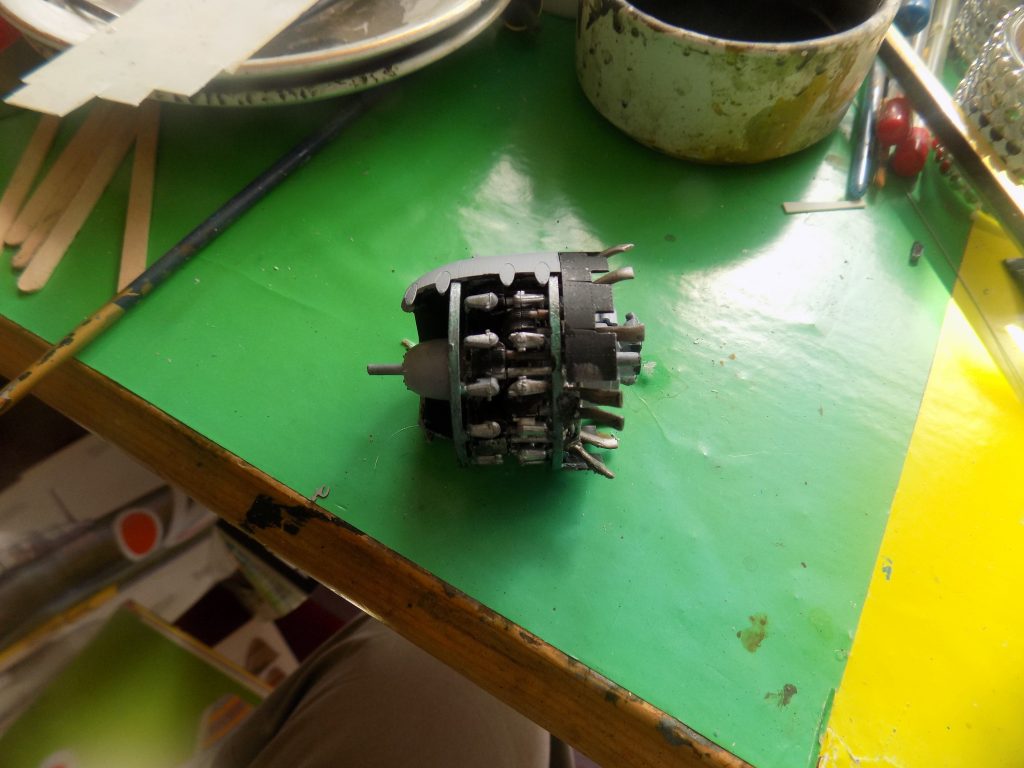
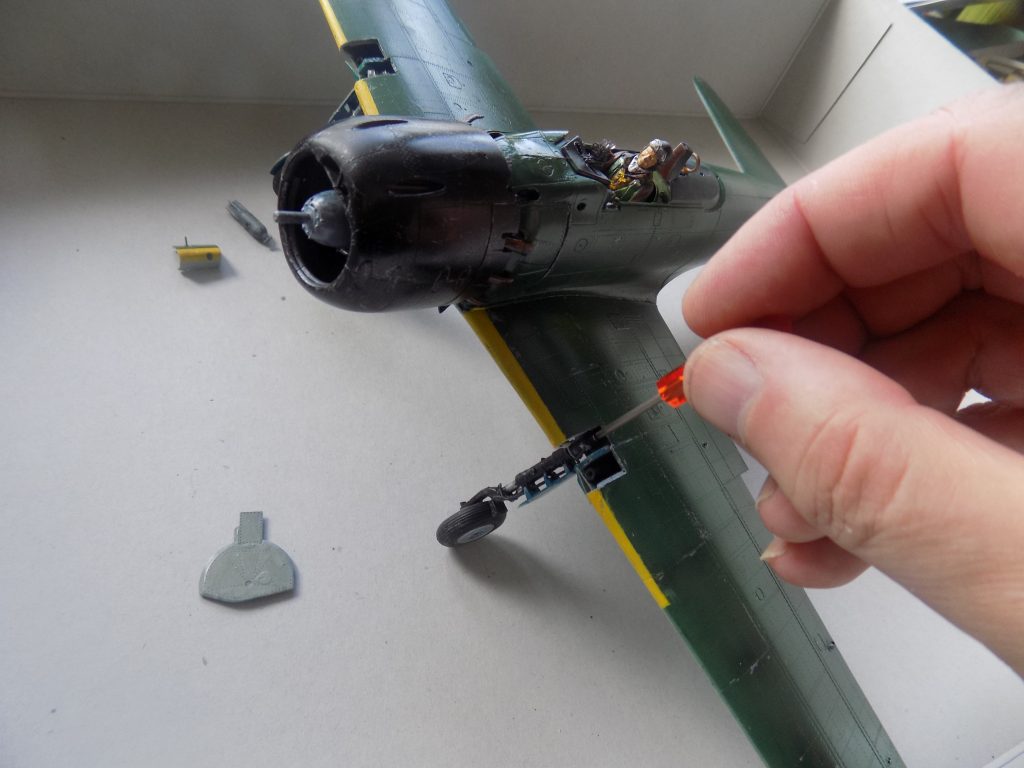
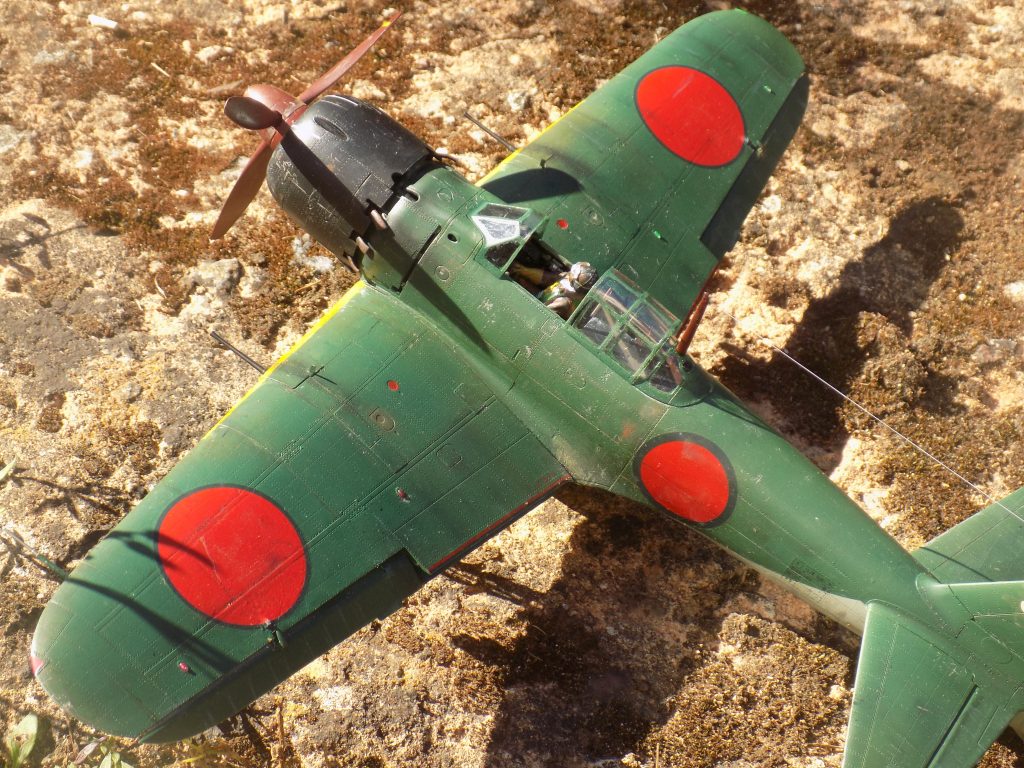

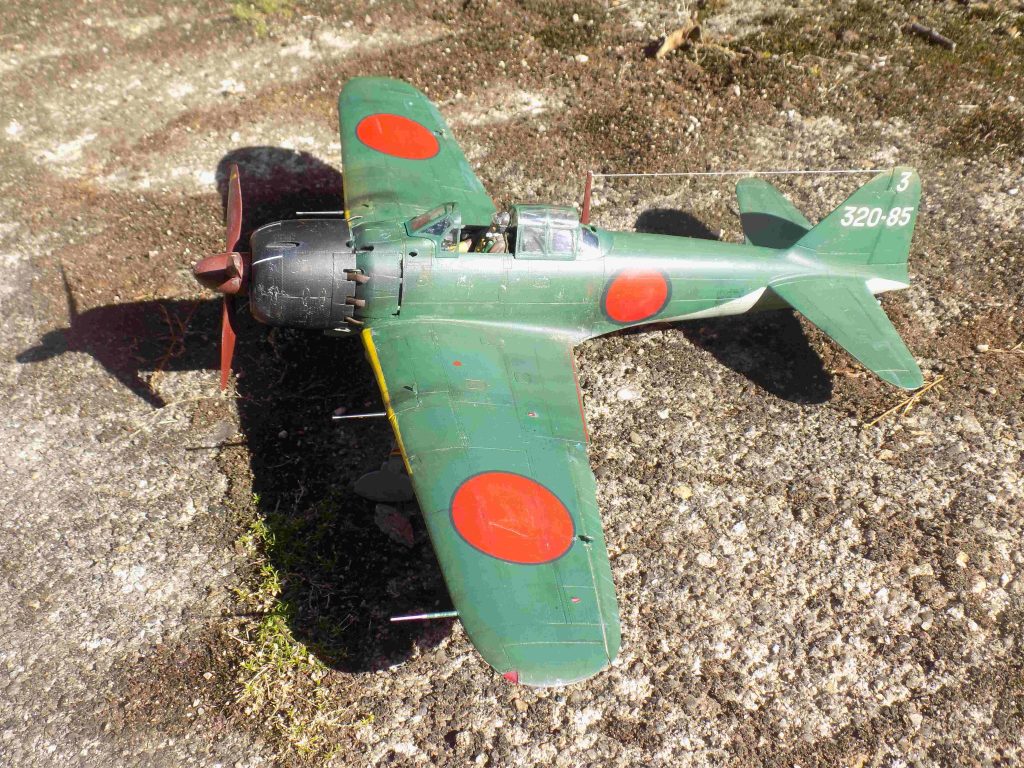
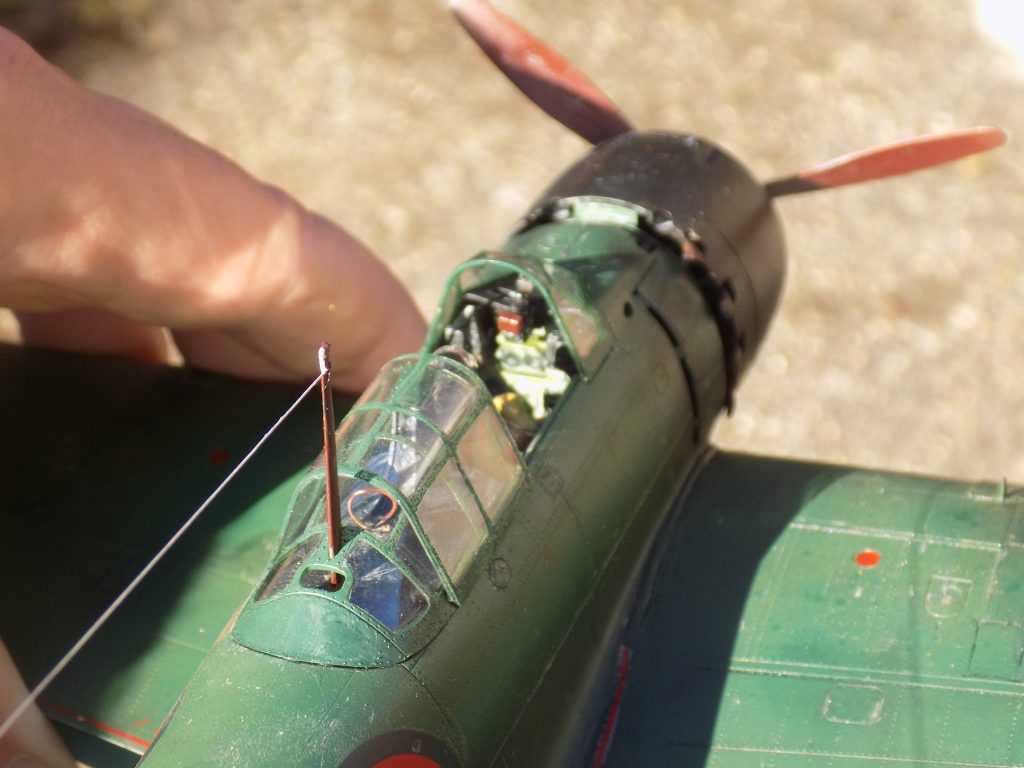
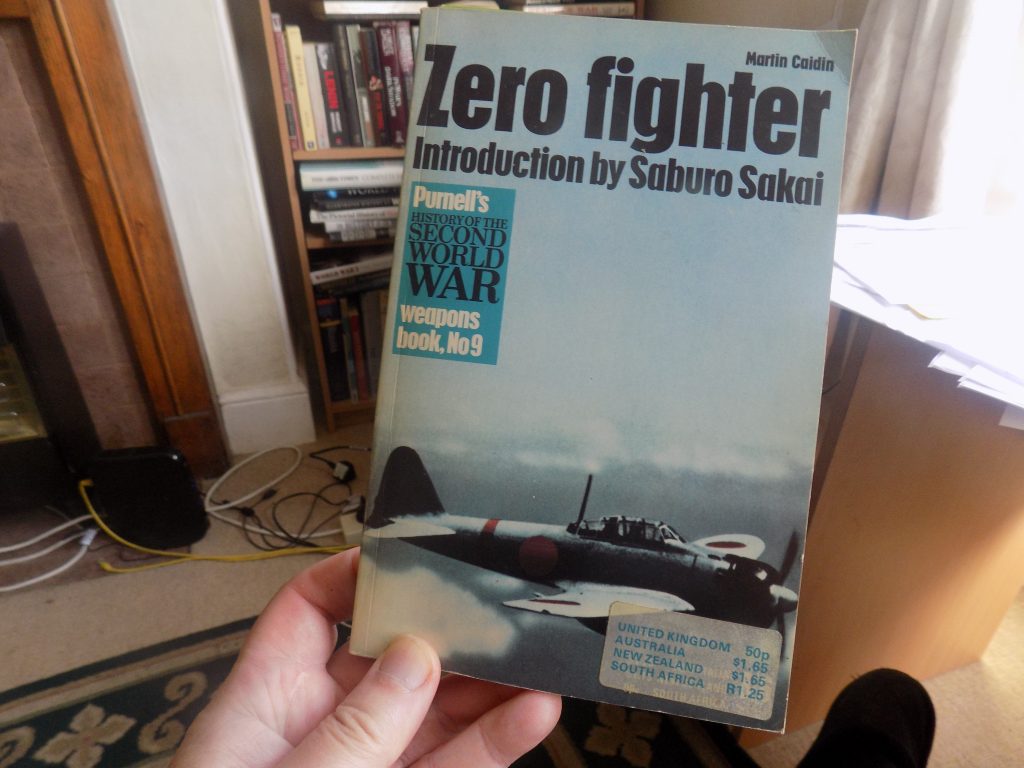
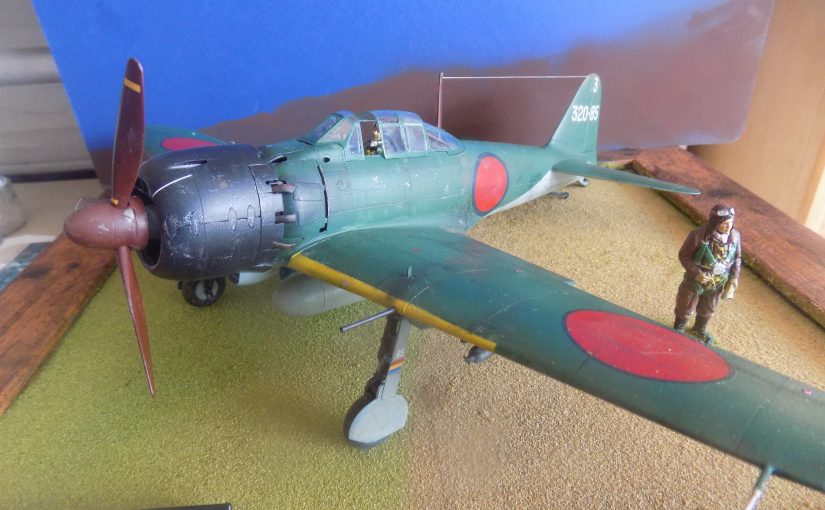
Very nicely done kit ,your back yard makes a nice base for that little extra touch of realism .
Thanks Rich. I have another 1/32 Zero in my stash which I hope to get around to but in the light grey colour camouflage, which also looks pretty spectacular. It’s a stroke of luck with my back yard. It’s a wonderful backdrop for tropical settings and makes me glad I never paved it over! Look out for more models in the same setting in the future including more Japanese stuff and the Zero!